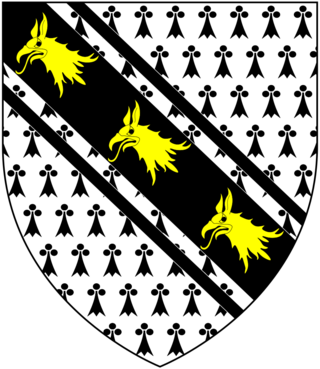
Walter Yonge (1579–1649) of Great House in the parish of Colyton in Devon, England, was a lawyer, merchant and diarist.

Sir John Fortescue of Salden Manor, near Mursley, Buckinghamshire, was the seventh Chancellor of the Exchequer of England, serving from 1589 until 1603.
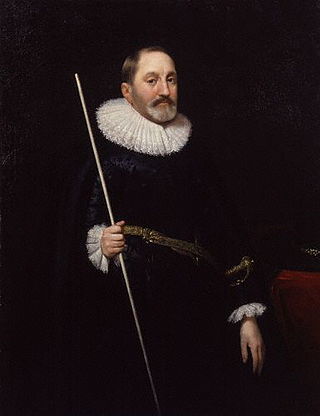
Sir Thomas Edmonds was an English diplomat and politician who served under three successive monarchs, Queen Elizabeth I, Kings James I and Charles I, and occupied the office of Treasurer of the Royal Household from 1618 to 1639.
The Fust Baronetcy, of Hill in the County of Gloucester, was a title in the Baronetage of England. It was created on 21 August 1662 for Edward Fust, who had earlier fought as a Royalist in the Civil War. The title became extinct on the death of the sixth Baronet in 1779.
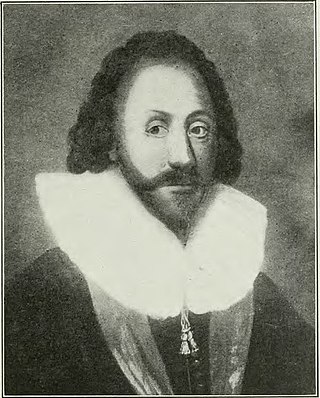
Sir Thomas Wise, KB, of Sydenham in the parish of Marystow and of Mount Wise in the parish of Stoke Damerel in Devon, was Sheriff of Devon in 1612 and in 1621 served as a member of parliament for Bere Alston in Devon.
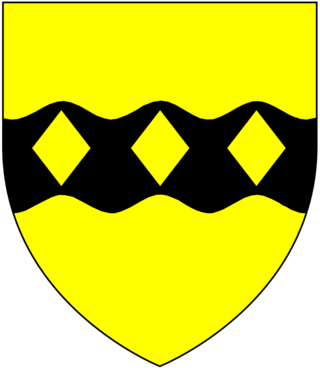
Nicholas Duck, of Heavitree and of nearby Mount Radford in the parish of St Leonards, both next to Exeter in Devonshire, was an English lawyer who served twice as a Member of Parliament for Exeter, in 1624 and 1625. He was one of the Worthies of Devon of the biographer John Prince (1643–1723), whose wife was his great-niece.
John Harris (1596–1648) of Lanrest, Liskeard in Cornwall and of Radford in the parish of Plymstock in Devon, was an English gentleman who was elected four times as a Member of Parliament for Liskeard in Cornwall, between 1628 and 1644. He supported the Royalist side in the Civil War.

Francis Courtenay, de jure 4th Earl of Devon, of Powderham, Devon, was an English Member of Parliament. In 1831 he was recognised retrospectively as having been de jure 4th Earl of Devon, having succeeded his father in 1630.

Richard Berkeley (1579–1661) of Stoke Gifford and Rendcomb both in Gloucestershire, England, served as a Member of Parliament for Gloucestershire in 1614.
Sir Thomas Lowe was an English politician who sat in the House of Commons at various times between 1606 and 1622. He was an alderman of the City of London and became Lord Mayor of London in 1604.

Henry Dennis was High Sheriff of Gloucestershire in 1629. He was lord of the manor of Pucklechurch, Gloucestershire. The Dennis family produced more Sheriffs of Gloucestershire than any other family. Like many members of the Gloucestershire gentry he refused to take a knighthood at the coronation of King Charles I in 1625, for which he paid a composition of £25.

Sir Richard Berkeley of Stoke Gifford, Gloucestershire was MP for Gloucestershire in 1604. He had previously served as Sheriff of Gloucestershire in 1564, and as Deputy Lieutenant of Gloucestershire. He was knighted by Queen Elizabeth I in 1568. In 1595 he was appointed Lieutenant of the Tower of London. In 1599 he was appointed custodian of Robert Devereux, 2nd Earl of Essex, who was kept under house arrest at Essex House in London. He died in 1604, whilst serving as MP, and was buried in The Gaunts Chapel, Bristol, where exists an effigy of him, which chapel had been founded in 1220 by Maurice de Gaunt, a member of the Berkeley family, and which stands opposite St Augustine's Abbey, founded by a member of the Berkeley family of nearby Berkeley Castle.

Sir Gilbert Hoghton, 2nd Baronet was an English politician who sat in the House of Commons variously between 1614 and 1640. He was a Royalist leader during the English Civil War.
Christopher Caple or Capell was an English mercer and politician who sat in the House of Commons in 1625 and 1626.

Sir John Davie, 1st Baronet (1588–1654) of Creedy in the parish of Sandford, near Crediton, Devon, was a member of the Devonshire gentry and served as Member of Parliament for Tiverton in 1621-2 and as Sheriff of Devon (1629–1630). He was created a baronet in 1641.
The Mayor of Gloucester is the first citizen of the City of Gloucester, England, and acts as chair of the council. The Mayor represents the Council and the City at civic, ceremonial and community events both inside the City boundaries and elsewhere.
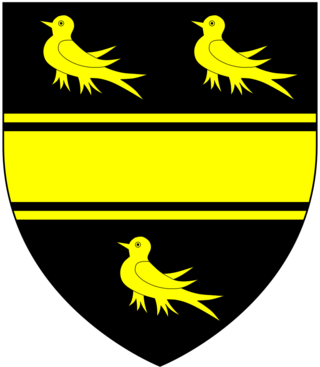
Sir George Smith of Madworthy-juxta-Exeter and Madford House, Exeter, Devon, was a merchant who served as MP for Exeter in 1604, was three times Mayor of Exeter and was Exeter's richest citizen, possessing 25 manors. He was the grandfather of George Monck, 1st Duke of Albemarle (1608-1670) KG and of John Grenville, 1st Earl of Bath (1628–1701).

Richard Beaple of Barnstaple, Devon, was a wealthy merchant, ship owner and member of the Spanish Company, and was three times Mayor of Barnstaple in 1607, 1621 and 1635. His elaborate mural monument survives in St Peter's Church, Barnstaple.

John Peryam, of Exeter, Devon, was elected four times as a Member of Parliament, for Barnstaple 1584, Bossiney 1586, Exeter 1589 and 1593. He served as Mayor of Exeter. He was the younger brother of Sir William Peryam (1534-1604) of Little Fulford, near Crediton in Devon, Lord Chief Baron of the Exchequer.

Sharpham is an historic estate in the parish of Ashprington, Devon. The Georgian mansion house, known as Sharpham House, overlooks the River Dart and is a Grade I listed building. The house was commenced in about 1770 by the Royal Navy captain Philemon Pownoll to the designs of the architect Sir Robert Taylor (1714–1788). In the opinion of Nikolaus Pevsner it contains "one of the most spectacular and daring later 18th century staircase designs anywhere in England". The park and gardens are Grade II* listed in the National Register of Historic Parks and Gardens. Part of the descent of Sharpham is shown on the Palmes family heraldic pedigree roll.















